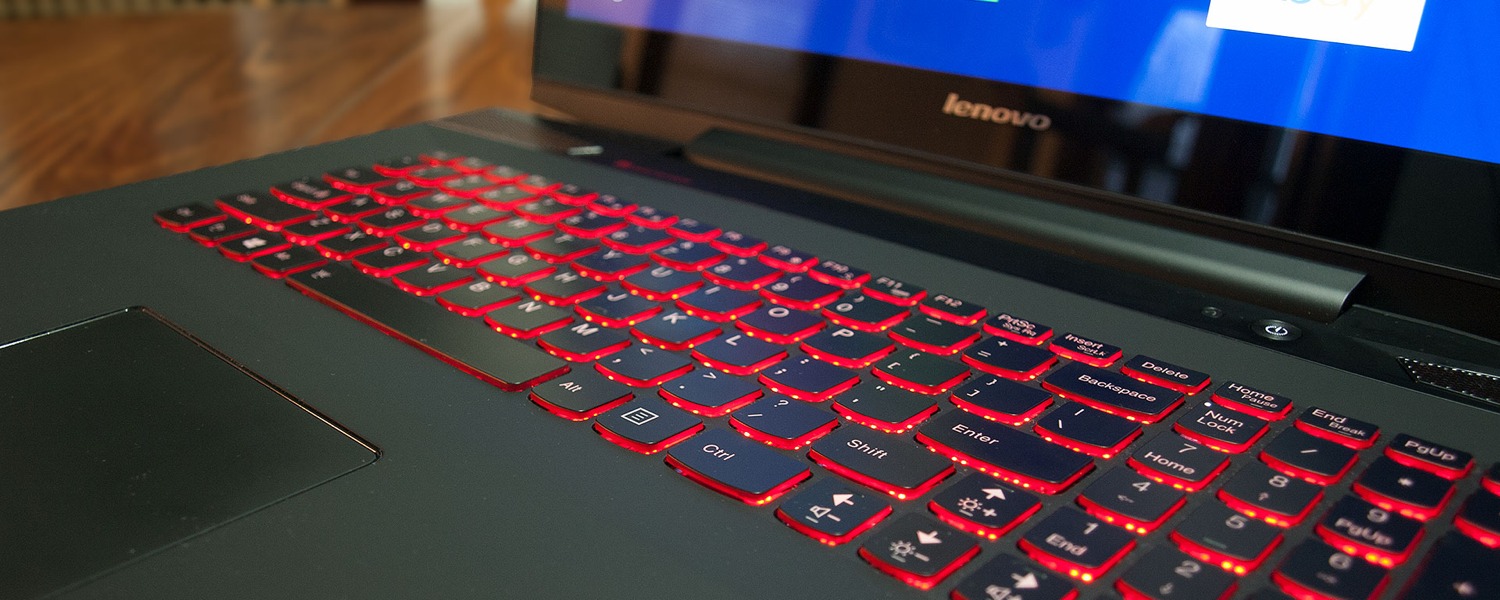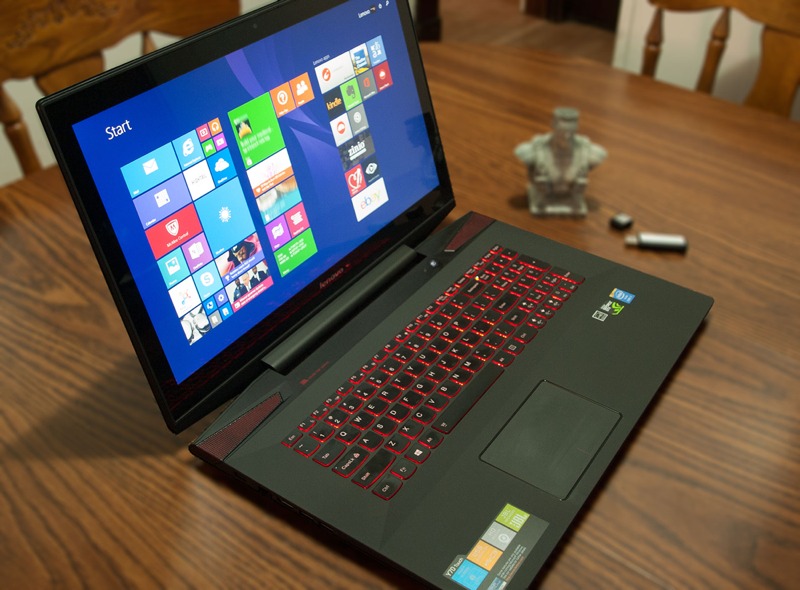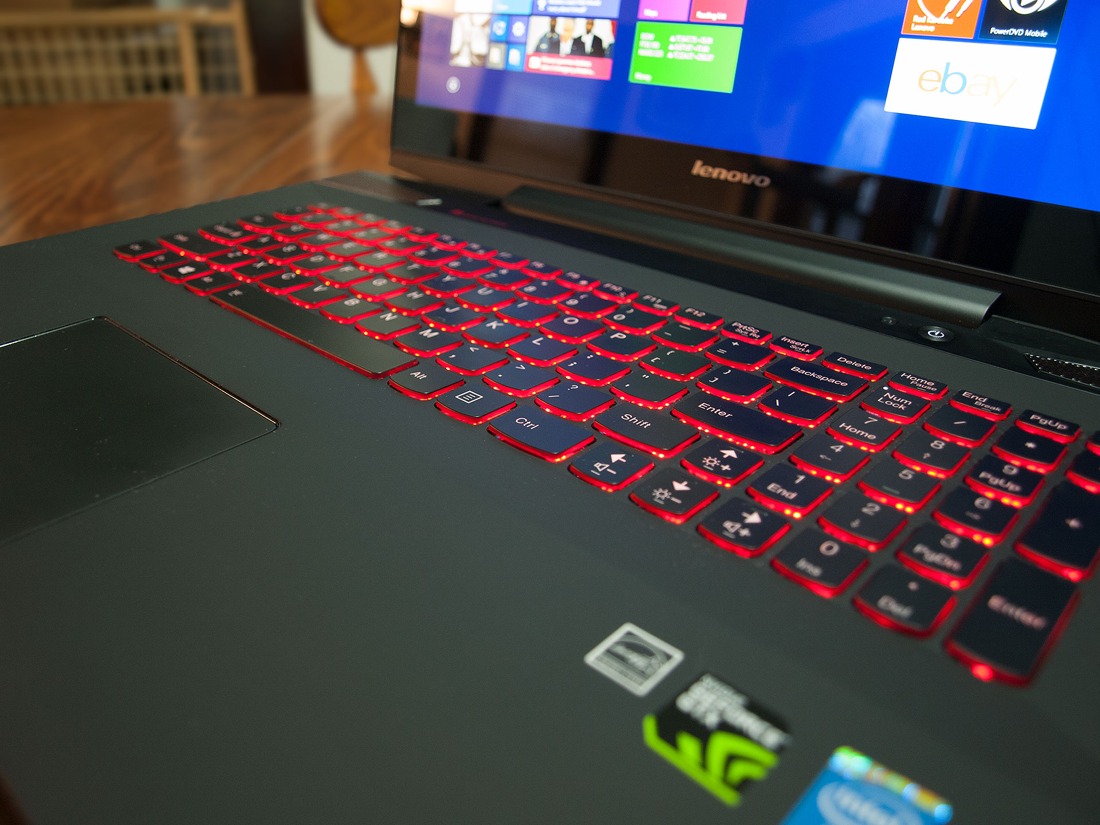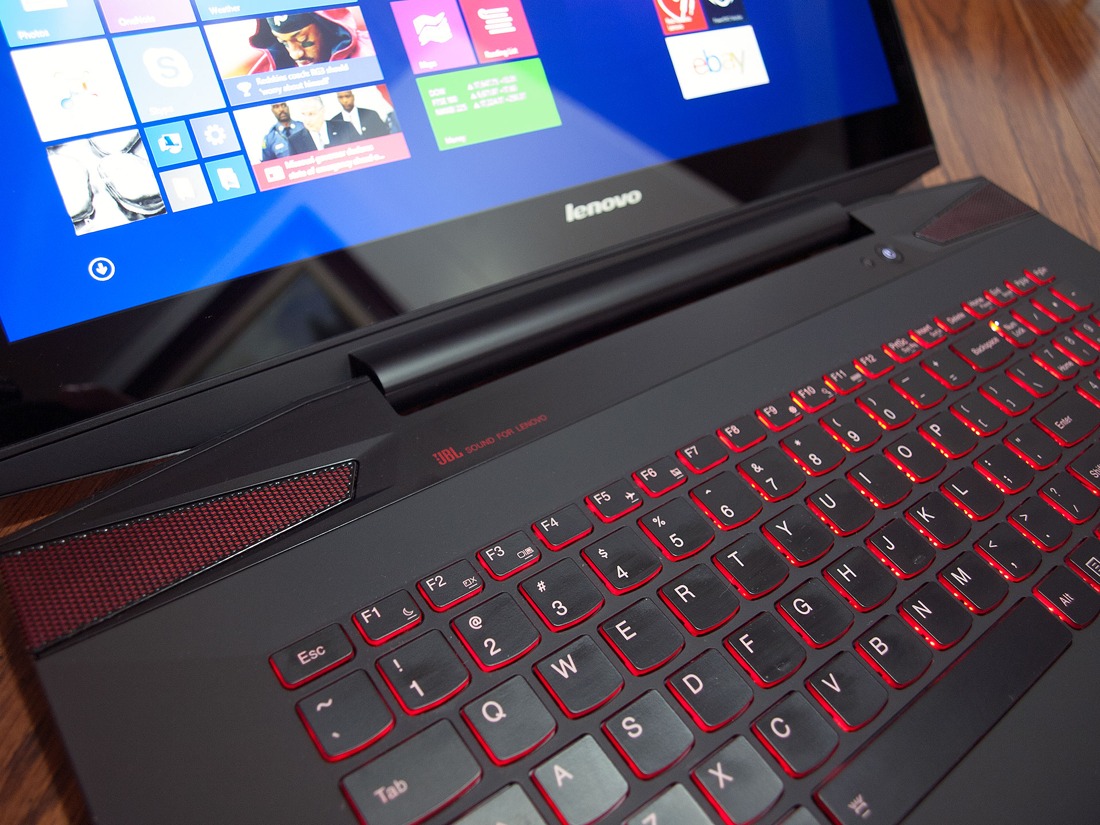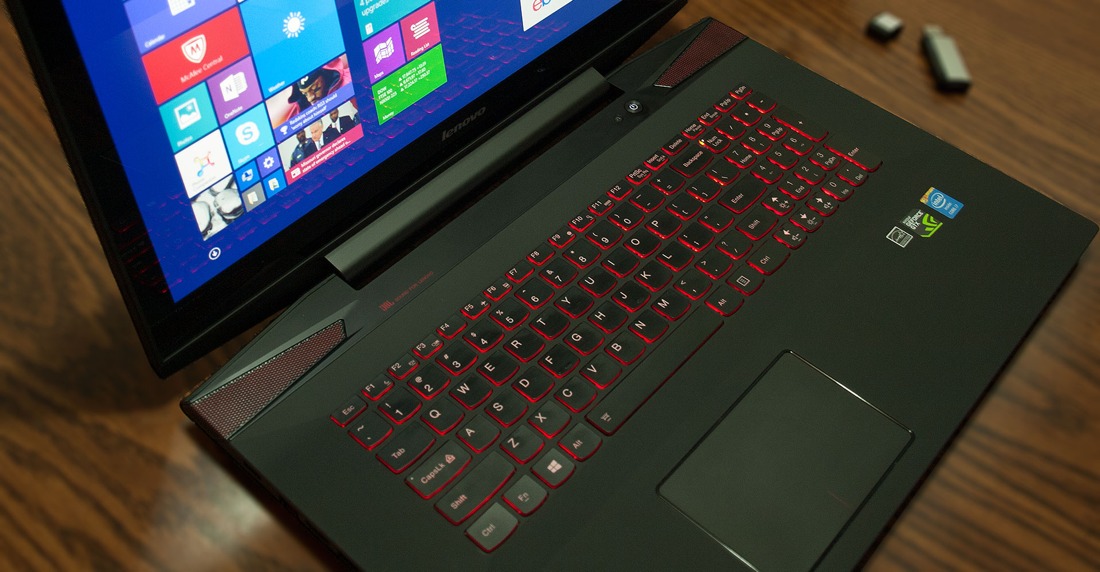The laptop is evolving in a hundred different directions, and where it ultimately ends up is something that will be decided by you and every other PC user. This evolution began with the advent of Windows 8 and its touch-friendly interface, for which we've seen all kinds of new designs emerge, everything from the funky to the funktastic. Lenovo, now the top PC supplier in the world, hasn't been afraid to experiment with different form factors and features, hence the company's Yoga line and, in a more traditional sense, the Y70 Touch being reviewed here.
Lenovo's Y70 Touch isn't a wild departure from the laptop designs you're used to seeing. In fact, it mostly looks like an average notebook, only sleeker and slightly more aggressive than most. But unlike that aging Windows 7 or Vista laptop you're using, the Y70 Touch boasts a 17.3-inch Full HD 1080 (1920x1080) multi-touch display. It's Lenovo's largest touchscreen laptop to date, and it's built for gaming, video editing, and to be an all-around work horse for the modern era.
Though big on ambitions, Lenovo's Y70 Touch measures a manageable 1.02 inches thick and weighs 7.5 pounds. That's not quite Ultrabook territory, but compared to full-fledged desktop replacement PCs, Lenovo's laptop is rather svelte (albeit still a bit hefty) by comparison.
Lenovo Y70 Touch - $1,399.99
- 17.3" 1,920 x 1,080 IPS w/ multitouch
- 2.5GHz Intel Core i7-4710HQ
- 16GB DDR3L 1,600MHz RAM
- Nvidia GeForce GTX 860M GPU 2GB GDDR5
- 1TB 5400 RPM + 8GB Solid State Hybrid Drive
- Backlit keyboard
- 2 x USB 3.0 , 1 x USB 2.0, HDMI, Kensington Lock
- 4-in-1 card reader
- Wi-Fi b/g/n/ac, Gigabit Ethernet, Bluetooth 4.0
- Windows 8.1 64-bit
- 7.5 lbs, 16.7 x 11.4 x 1.02 inches
It's also well equipped, or seemingly so. Our configuration (80DU004HUS) came packing a fourth generation Intel Core i7 4710QH processor clocked at 2.5GHz, 16GB of DDR3L-1600 RAM, Nvidia GeForce GTX 860M graphics with 2GB of GDDR5 memory, and a 1TB solid state hybrid drive with 8GB of flash-based storage, a spacious compromise over a dedicated (and pricier) SSD, though hampered by a slow spinning spindle (just 5400 RPM - boo!).
In terms of supplementary features, the Y70 Touch boasts a pair of SuperSpeed USB 3.0 ports, a single USB 2.0 port for nostalgia, 4-in-1 card reader, HDMI output to bore the in-laws with your vacation photos on the big screen TV, SPDIF, a Gigabit LAN port, an audio combo jack, 802.11ac Wi-Fi, Bluetooth 4.0, JBL stereo speakers with Dolby Advanced Audio v2, 720p webcam, backlit keyboard (earning Lenovo a fist-bump), and a 4-cell 54Whr battery. We also received a slim USB DVD burner with our laptop, which is fast becoming a trend among OEM and boutique system builders as they move away from integrated optical drives.
This is a special configuration of the Y70 Touch line that we found selling at Best Buy for $1,400, the same price as Lenovo's cheapest version online, the difference being ours has double the RAM at 16GB - the $1,400 configuration on Lenovo's website sports 8GB. There are two other pre-configured options on Lenovo's product page, a $1,500 model with 16GB of RAM and double the GDDR5 memory for the GPU (4GB), and an $1,800 configuration featuring the same upgrades plus a dedicated 512GB SSD. Unfortunately, you can't customize any of these setups at the time of purchase, at least outside of adding software and accessories.
There's no doubt Lenovo is targeting gamers and PC enthusiasts with the Y70 Touch. The styling isn't quite as bold and aggressive as some of Asus ROG's G Series laptops, but subtle angles and accents throughout the build give the system a more menacing look than the crop of notebooks that typically fill a board room. Even the brushed aluminum motif (it's actually plastic) is slightly unique - rather than use single brush strokes in any particular direction, Lenovo opted for a more uncommon crisscross pattern.
The front of the chassis is ever-so-slightly tapered and contains blue LED indicators for power, battery, touchpad (whether it's enabled or disabled), and drive activity. Over on the left side of the laptop you'll find the proprietary AC power adapter jack, Ethernet port, HDMI output, and two USB 3.0 ports, while the right side houses the S/PSIDF jack, combo audio jack, memory card slot, USB 2.0 port, and a Kensington lock slot. There are no cooling vents on either side, or even the back - just some dummy grilles that are there for looks.
Popping open the Y70 Touch's lid reveals the 17.3-inch multi-touch display. It's an IPS panel with a 1920x1080 resolution supported by a sturdy hinge design that doesn't yield any play when poking and swiping at the screen. It also boasts bright and crisp colors with generous viewing angles, as are typical of most IPS panels. If we were to muster up a complaint, it would be that a 17.3-inch panel is a prime candidate for a 3K or even 4K resolution for added real estate, though scaling issues and the added demand on the GPU (when gaming) are drawbacks that Lenovo avoids by sticking with a Full HD 1080 display.
Lenovo is known for its curved keycaps, which lend themselves to a more natural and accurate typing experience, and that's what you'll find on the Y70 Touch. However, the low profile design chews away at the brownie points we would have otherwise awarded Lenovo - it's a bit of an adjustment coming from a standard keyboard with more key travel than the Y70's pancake plank. On the bright side (literally), it boasts a red LED backlight to make typing in your darkened man cave a bit easier. There's also a dedicated numpad, so when it comes time to turn off the game and fudge your tax return, you won't need to switch PCs.
Sitting below and off-center to the left of the keyboard is a sizable touchpad. Like the lid, it's highly sensitive to finger grease and will make you think you're more of a slob than you really are. So, be prepared for frequent wipe downs. You can disable the touchpad by pressing Fn+F6; likewise you can re-enable it using the same hotkey combination.
The Y70 Touch has a premium look and feel to it thanks in part to the rubberized coating that wraps around the touchpad and keyboard. Towards the bottom, there's plenty of room to rest your wrists, and up above JBL stereo speakers pipe audio out of a pair of sharply angled speaker grilles. Laptop speakers are rarely anything to crow about, and as we suspected would be the case, hard thumping bass is sorely lacking. However, the audio is far from tinny - it's a step or three above most built-in cans with enough volume to fill a small room, which is good news if you're a college student headed off to dorm life or occupy a small apartment.
Underneath are a pair of dome rubber bumpers towards the front and a long rubber strip that runs along the back to keep the Y70 Touch from sliding around. What you won't find at a glance is an easily removable battery, though if you take the time to remove a whole bunch of tiny screws, you can pop the bottom maintenance panel off (lift up and push forward) and toss it aside to gain access to the system's guts, including the battery.
Other than to swap the battery, one of the reasons you might want to do this is to replace the slow spinning hybrid drive with a dedicated SSD for added performance, as we'll get into in just a moment. If you ordered the lowest end configuration on Lenovo's website, it also wouldn't hurt to double the amount of RAM to 16GB, especially if you're into content creation, edit a lot of photos, or want to stay ahead of the gaming curve.
System and Performance
The Y70 Touch came to our doorstop wielding the 64-bit flavor of Windows 8.1 (it has a sweeter taste than the 32-bit version). One thing we liked to see right off the bat is that the system wasn't bogged down by bloat. It did come with a few third-party programs, though outside of McAfee, there was nothing egregious that loaded at startup.
Unfortunately, that didn't help with our cold boot time. We clocked it at 38 seconds from powering on to reaching the desktop, which is around three times longer than both the MSI GS70 Stealth Pro and Maingear Pulse 15. That's due to the SSHD and pre-installed antivirus software.
All graphics-based benchmarks (unless otherwise noted) were performed with the discrete Nvidia GPU selected as the recommended graphics card in the Nvidia control panel.
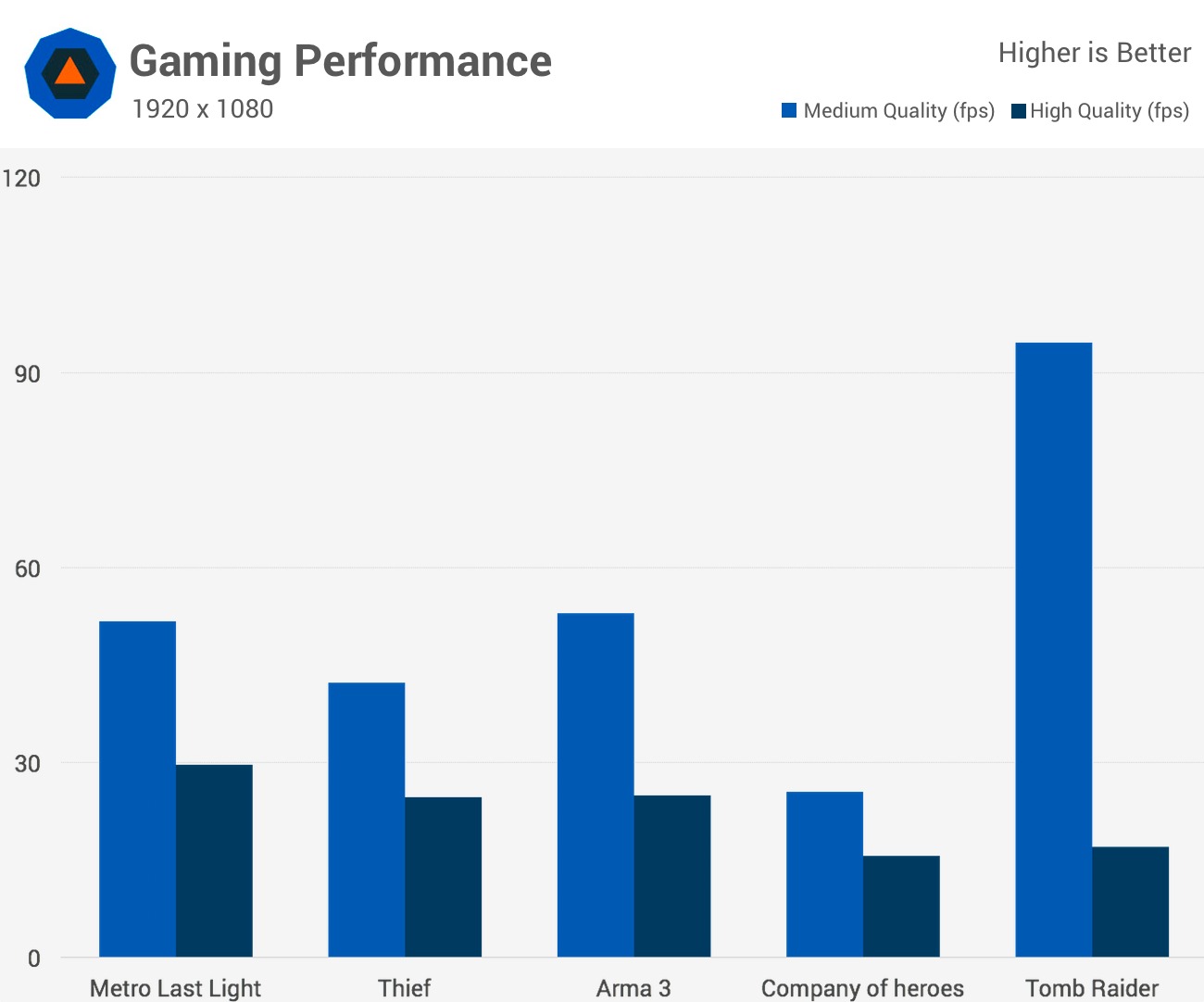
Compared to the aforementioned MSI and Maingear rigs, Lenovo's Y70 Touch is at a GPU disadvantage with its GeForce GTX 860M GPU versus the GTX 870M. Specifically, it's working with less shaders (1152 compared to 1344), texture units (96 compared to 112), ROPs (16 compared to 32), and has a narrower memory bus (128-bit compared to 192-bit), to highlight the major technical differences.
Those differences translated into slower gaming benchmarks across the board, though the Y70 Touch certainly proved playable at its native 1920x1080 resolution with medium quality graphics settings. Only Company of Heroes 2 had the system beginning to break a sweat at 28.56 frames per second (average), otherwise the next lowest average was in the 40s.
Things changed when we cranked up the graphics settings. Framerates took a hit to below playable in Tomb Raider and Company of Heroes 2, and walked uncomfortably close to the line of what's acceptable in the three other titles.
| Lenovo Y70 Touch | MSI GS70 Stealth Pro | Maingear Pulse 15 | |
| 3DMark 11 | 5047 | 4231 | 4355 |
| PCMark 7 | 3832 | 6196 | 5904 |
| iTunes encoding | 68 seconds | 59 seconds | 58 seconds |
| File transfer (small files) | 19 seconds | 5 seconds | 4 seconds |
| File transfer (single large file) | 12 seconds | 4 seconds | 3 seconds |
| Cold boot time | 38 seconds | 12 seconds | 14 seconds |
For the the iTunes encoding test, we convert 14 MP3s (119MB) to 128Kbps ACC files and measure the operation's duration in seconds. The Y70 Touch finished the job in 68 seconds. That's not the fastest we've seen, though respectable.
For file transfers, we measure how long it takes to copy two sets of files from one location to another on the same drive. The small files test consists of transferring 557 MP3s, totaling 2.56GB, while in the large file the same MP3s were zipped into a single 2.52GB file.
Battery Life
To test the battery life of the Y70, we stuck to our usual method, which is a video playback test that loops a 720p rip of the movie Inception (or at least we think we did - we're not really sure what's real anymore after watching that flick) at full screen with max brightness and Wi-Fi disabled. This gives us a pretty good approximation of a worst case scenario (save for gaming), and in this case, the laptop stayed running for 2 hours and 42 minutes.
For good measure, we repeated the test with the screen brightness dialed down to 60 percent, a strategy that often yields additional run time. And it did, with the Y70 Touch refusing to give up the ghost until holding strong for 3 hours and 50 minutes - enough to watch a couple of flicks on a cross country flight.
Usage Impressions and Conclusion
After spending extensive time testing the Y70 Touch in real world conditions, we were able to get a better feel for the laptop than what the benchmarks alone can provide. With that in mind, let's start with the good.
This is a multimedia workhorse, and towards that end, we were most impressed with the screen and speaker combination. It's not often that we felt the need to tap at the touchscreen panel, though on the few occasions we felt compelled to do so, it responded swiftly without any lag. It's also a plus that the display didn't bounce back and forth, which would otherwise negate the convenience of a touchscreen.
The brightness, color reproduction, and overall quality of the IPS panel are what we liked most about the display. There were no nasty artifacts from viewing the screen from off-angles, even extreme ones, and with the brightness cranked up, the colors popped off the screen in ways that TN panels just can't reproduce.
Combined with the better-than-expected built-in speakers, the Y70 Touch is a nifty entertainment device, whether it's for watching movies, kicking back to a groovy playlist, or playing games. We'll still turn to headphones when we want a higher quality audio experience (or hard hitting bass), but on its own, it does a good job of not making us think about how much we typically hate laptop speakers.
Where the overall experience begins to detour away from Awesome-ville towards Regret City is the storage scheme. We understand what Lenovo was going for here - spacious storage aided by NAND flash memory for SSD-like speeds, but it falls short on the latter. Way short.
We noticed a number of performance bugaboos, such as slow-loading applications that prompted us to question whether we really double-clicked on its corresponding icon and, at times, jerky video. The 5400 RPM spindle speed is a serious detriment to overall performance that makes it feel like we're trying to drive a sports card through quicksand. Simply put, the other hardware underneath the hood can't overcome the storage bottleneck, which is a shame given all the untapped potential. But hey, at least there's plenty of room for all of your applications, even if it does take a painfully long time to install them.
As a daily driver, we're also disappointed with the low-profile keyboard. This falls decidedly on the subjective side, but unless you're a fan of flat-style planks, you'll be much better served with an external keyboard (Protip: go for mechanical key switches, you'll thank us later).
While you're at it, get yourself a solid gaming mouse. That's not another knock against the Y70 Touch - touchpads just don't compare to a good ol' rodent - but given the Y70 Touch's ability to game at its native resolution on an above average display, it would be a shame to only use the system for TPS reports and other boring fare. The slow spinning hard drive isn't much of a factor once you're in game, and the GeForce GTX 860M GPU, while not the fastest discrete graphics on the block, packs a fair amount of pixel pushing punch. Besides, you'll want something to occupy that lone USB 2.0 port so you don't accidentally shove a SuperSpeed USB 3.0 flash drive into it and suffer slow file transfers as a result.
So, where do we ultimately fall on this one? If not for the storage bottleneck, we'd be much more enthused about the Y70 Touch. It's a relatively thin and comparatively light (to a desktop replacement) gaming and entertainment system that looks great to boot. However, you'll quickly lament the lack of an SSD, or at least a faster mechanical hard drive. It's not an absolute deal killer, but it is something to seriously consider when shopping around in this price range.
score
Pros: Beautiful, vibrant display. Good-enough gaming performance on medium graphics settings. Relatively thin and light for a laptop its size. Above average audio.
Cons: The lack of an SSD takes a big toll on performance and at this price it's a major letdown. Could use an extra USB port. No hardware customization options at the time of purchase so you're stuck with the GTX 860M.
